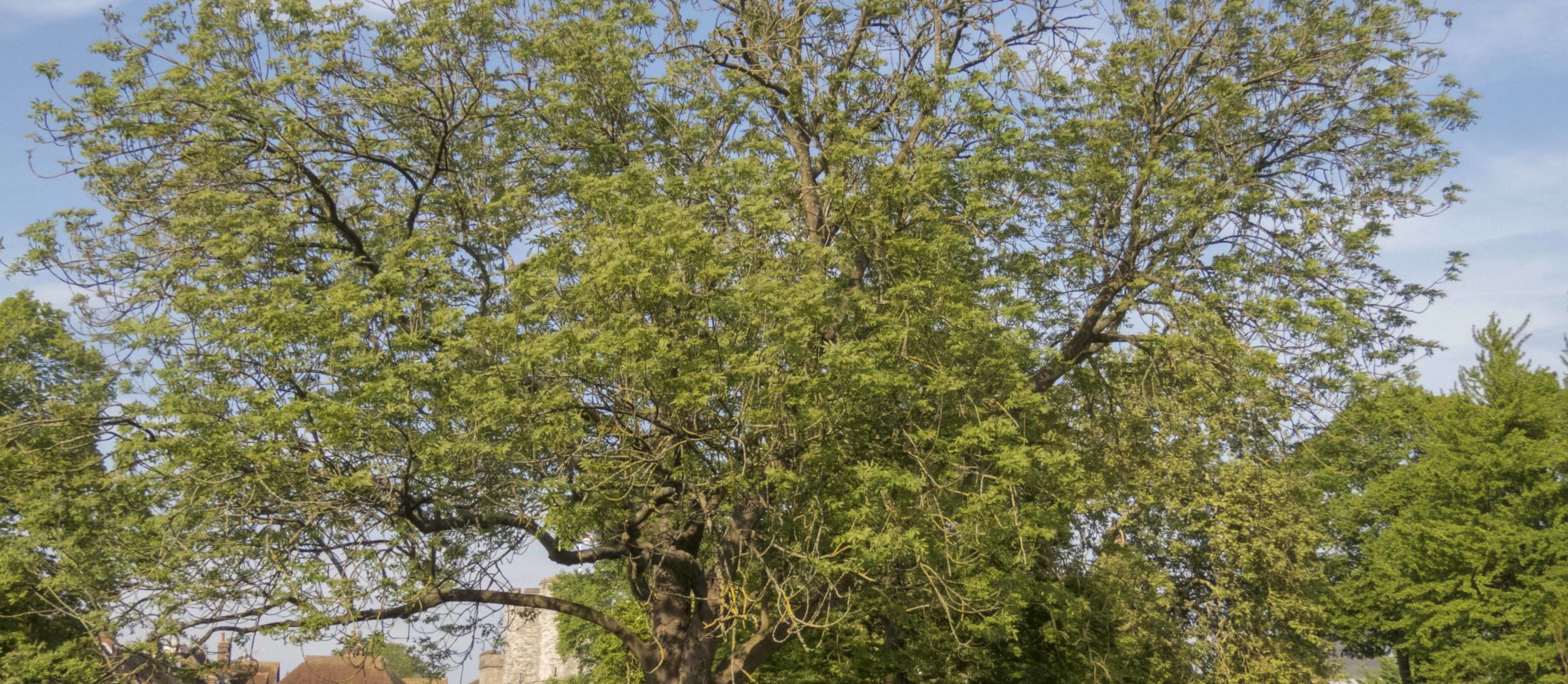
Ash trees affected by dieback Westgate Park. Photo: David Carey

Ash trees affected by dieback Westgate Park. Photo: David Carey
We had a great walk in Canterbury this Sunday morning looking at the eco-benefits of trees in towns and cities, and focusing particularly on Ash, for The Ash Project. We saw native European or Common Ash trees, and variants such as the One-leaved Ash form and a grafted Weeping Ash tree, all sadly more or less already affected by Dieback.
There were many other outstanding trees in and around Westgate Gardens, including the amazing Oriental Plane Tree, Tulip trees, Lime trees, Beech trees, conifers, living fossils and modern street trees. Leading the walk were Tree Wardens Ros Rootes, Jim Sanders and David Carey, and we were able to use the new app Treezilla to calculate the eco-benefits in monetary terms of a typical ash tree in front of us in the gardens and we calculated they offer over £200 just from that one medium Ash tree, year after year after year.
Tree Wardens and others can use Treezilla to give a rough idea of the some of the eco-benefits and therefore the hidden value of trees in a street, park, housing development or village anywhere in Kent. Eco-benefits include energy saving, fighting climate change, absorbing carbon dioxide, producing oxygen, trapping pollutants, benefiting human health, improving bio-diversity, supporting well-being and good mental health, as well as simply improving amenity and the quality of our visual environment!
It will be very sad indeed if we do lose the contribution to our towns and cities of the Ash Trees currently growing among us and helping to sustain us in so many different ways.
David Carey, Volunteer Tree Warden and Pond Warden for Hadlow Parish. Writing for the Kent Tree and Pond Partnership, composed of all the Tree and Pond Wardens in Kent and Medway, volunteers supporting their local environment and communities.
Website: https://kenttreeandpondpartnership.wordpress.com
Facebook: https://www.facebook.com/KentTPW/